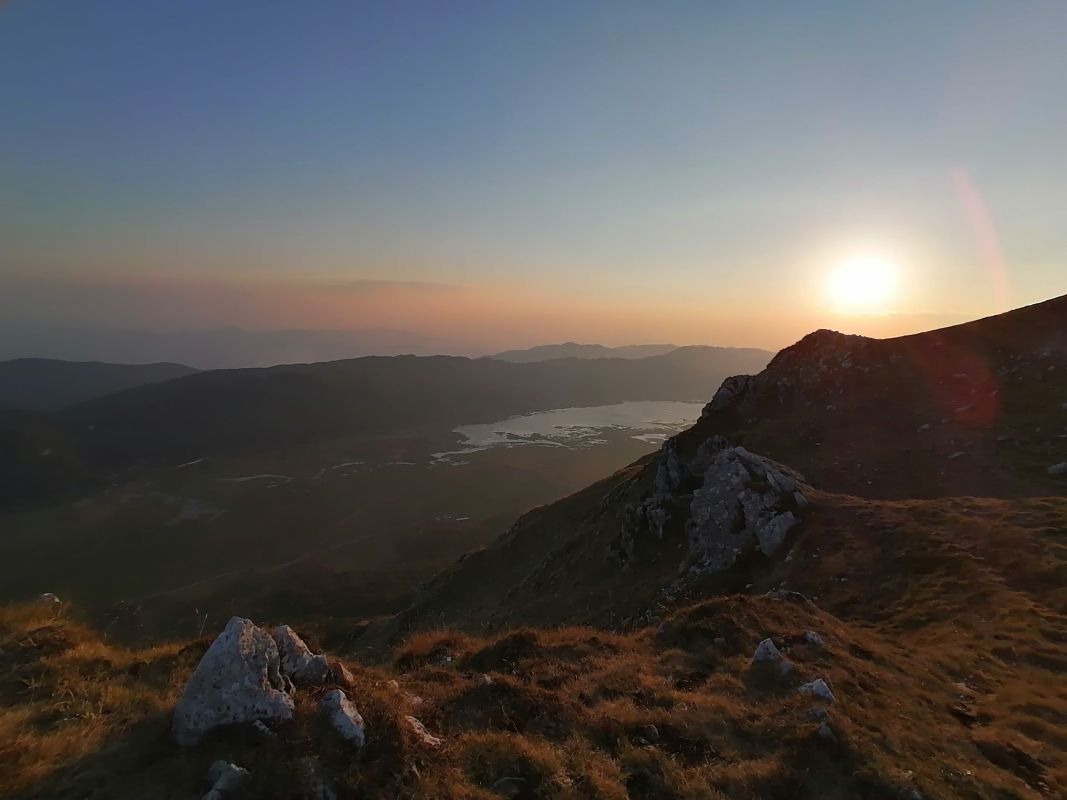It could soon become a national park, straddling two regions, Campania and Molise, so as to entirely incorporate the Matese massif, which for now only falls within its borders on the Campania side.
Precisely to protect the extraordinary environmental value of the latter, the Matese Regional Park was established in 1993 for the construction of which, however, had to wait until 2002. The current park covers an area of over 33 thousand hectares and reaches almost two thousand meters high with the summit of La Gallinola (1923 meters), followed by Monte Mutria only one hundred meters lower. Clear, calcareous mountains, marked by deep valleys and ravines, sinkholes and caves, or rather all the typical karst phenomena common also to the mountain ranges of Campania. And among the caves, of great interest are those dug by the river Lethe, which exhibits itself in suggestive waterfalls, while inside the dripping continues to embroider stalactites and stalagmites.
Rich in springs and streams, the park is crossed not only by the Lethe, but also by the rivers Titerno and Tammaro. And it welcomes in its territory, at the foot of La Gallinola and the Molise Monte Miletto, a blue eye of sky among the limestone rocks, Lake Matese, which with its 1011 meters is the highest karst lake in Italy, fed by the melting of the snow of the peaks that dominate it. In the park there is also the lake of Gallo Matese.

The considerable altitude reached means that the territory of the park is characterized by various climatic zones, from the Mediterranean to the continental one at high altitudes, and, therefore, by different habitats that contribute to an extraordinary biodiversity of both plants and animals.
As for the flora, gradually climbing in altitude, you pass from the Mediterranean maquis with holm oaks, hornbeams, strawberry trees and other typical plants, to Turkey oak, chestnut, maple, dogwood, ash, manna ash and silver fir woods, until you enter, still higher up, in the realm of the beech, where in the clearings where the sunlight insinuates itself more powerfully, elderberry and gentian are widespread.
Lord among wildlife is the wolf, specimens of which have been frequently sighted between lakes Matese and Gallo Matese. Very numerous is the representation of other mammals such as wild cats, foxes, badgers, black squirrels, dormice, weasels and beech martens in the deciduous woods. And also hare, wild boar and roe deer, reintroduced in 2008. Horses live in the wild in the pasture areas. Among the birds you can admire great spotted woodpecker, tordella, jay, redstart and rock partridge. Furthermore, the golden eagle, buzzard and peregrine falcon live among the rocky walls of the Valle dell'Inferno, while ducks, herons and storks populate the lands around the lakes, where carp, tench, perch, eels and pike dart about introduced by man. In the Lethe caves live small white eyeless crustaceans and butterflies with phosphorescent eyes.
The territory of the park is suitable for practicing various outdoor sports. In addition to trekking and naturalistic excursions, mountain biking, alpine and grass skiing, hang gliding, speleology in the caves and kayaking in Lake Matese.

Twenty Municipalities are part of the Matese Park: Ailano, Alife, Capriati al Volturno, Castello del Matese, Cerreto Sannita, Cusano Mutri, Faicchio, Fontegreca, Gallo Matese, Gioia Sannitica, Letino, Piedimonte Matese, Pietraroja, Prata Sannita, Raviscanina, San Gregorio Matese, San Lorenzello, San Potito Sannitico, Sant'Angelo d'Alife, Valle Agricola. The headquarters are in San Potito Sannitico, in the Caserta area.











Comments powered by CComment